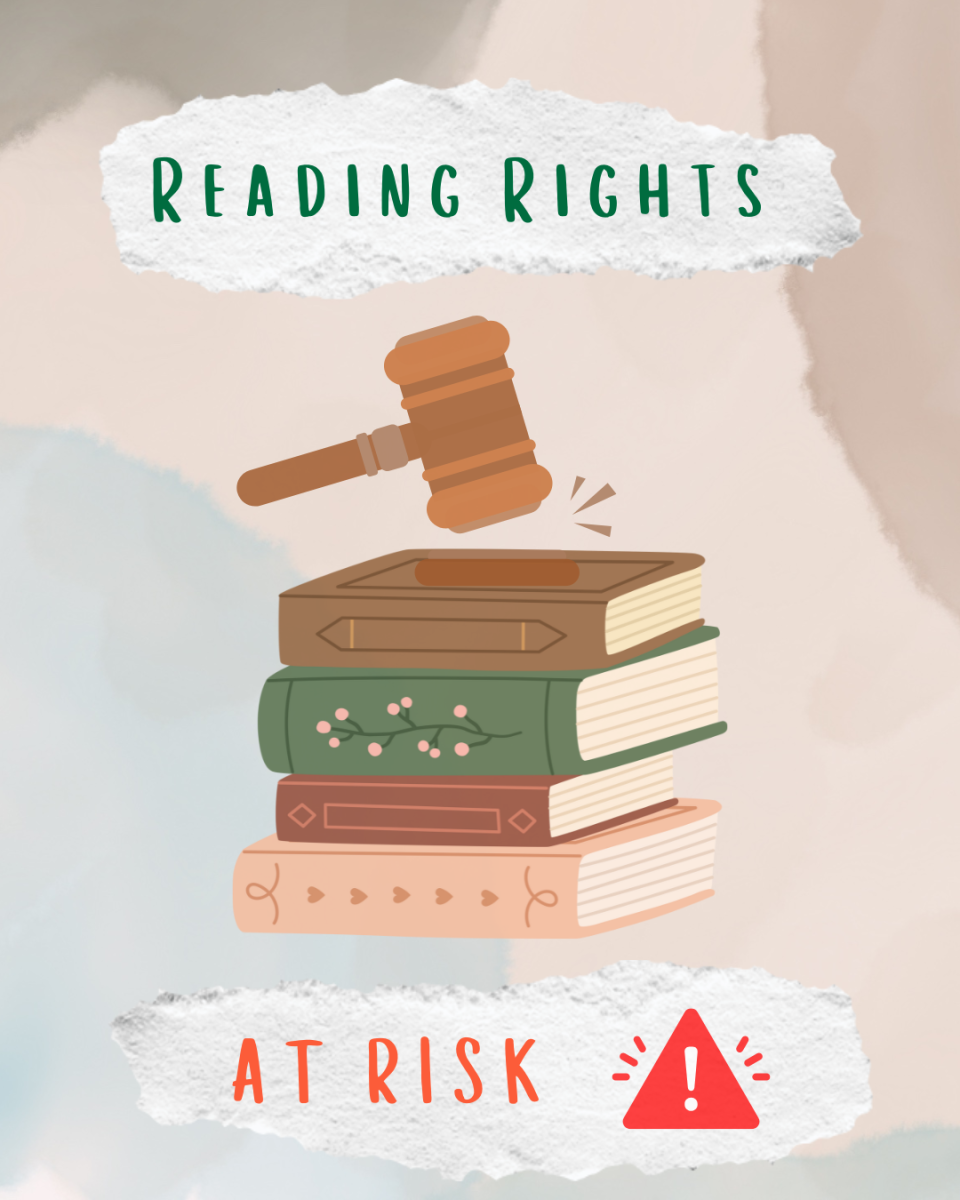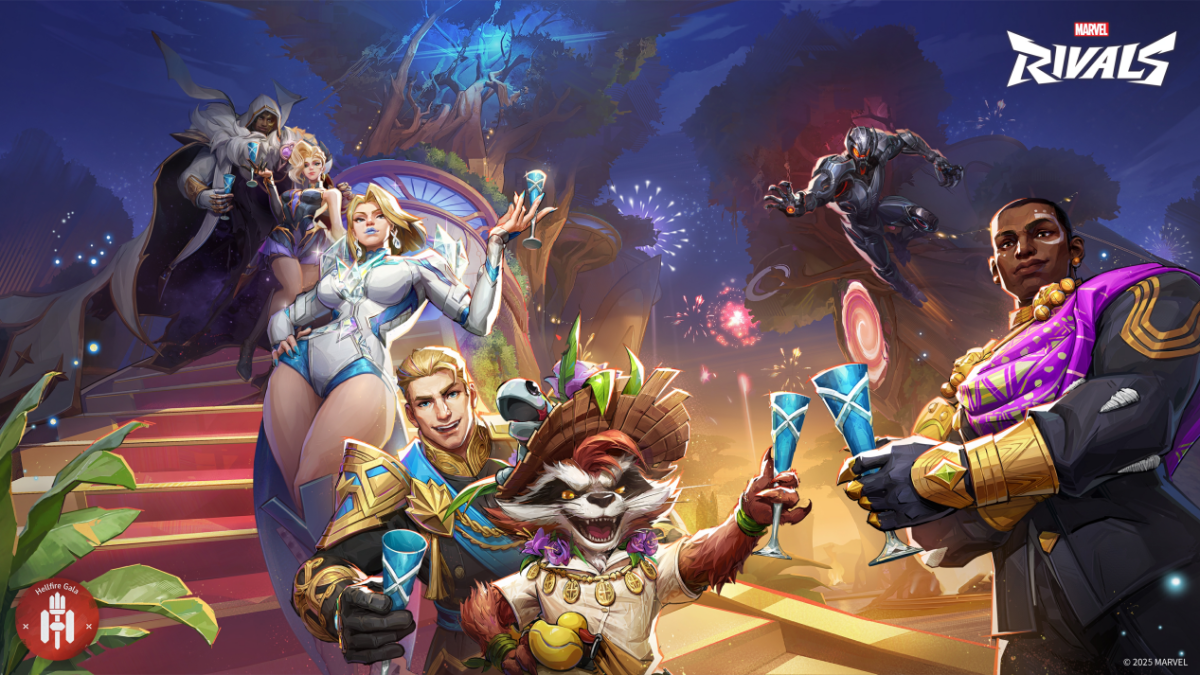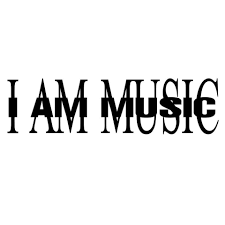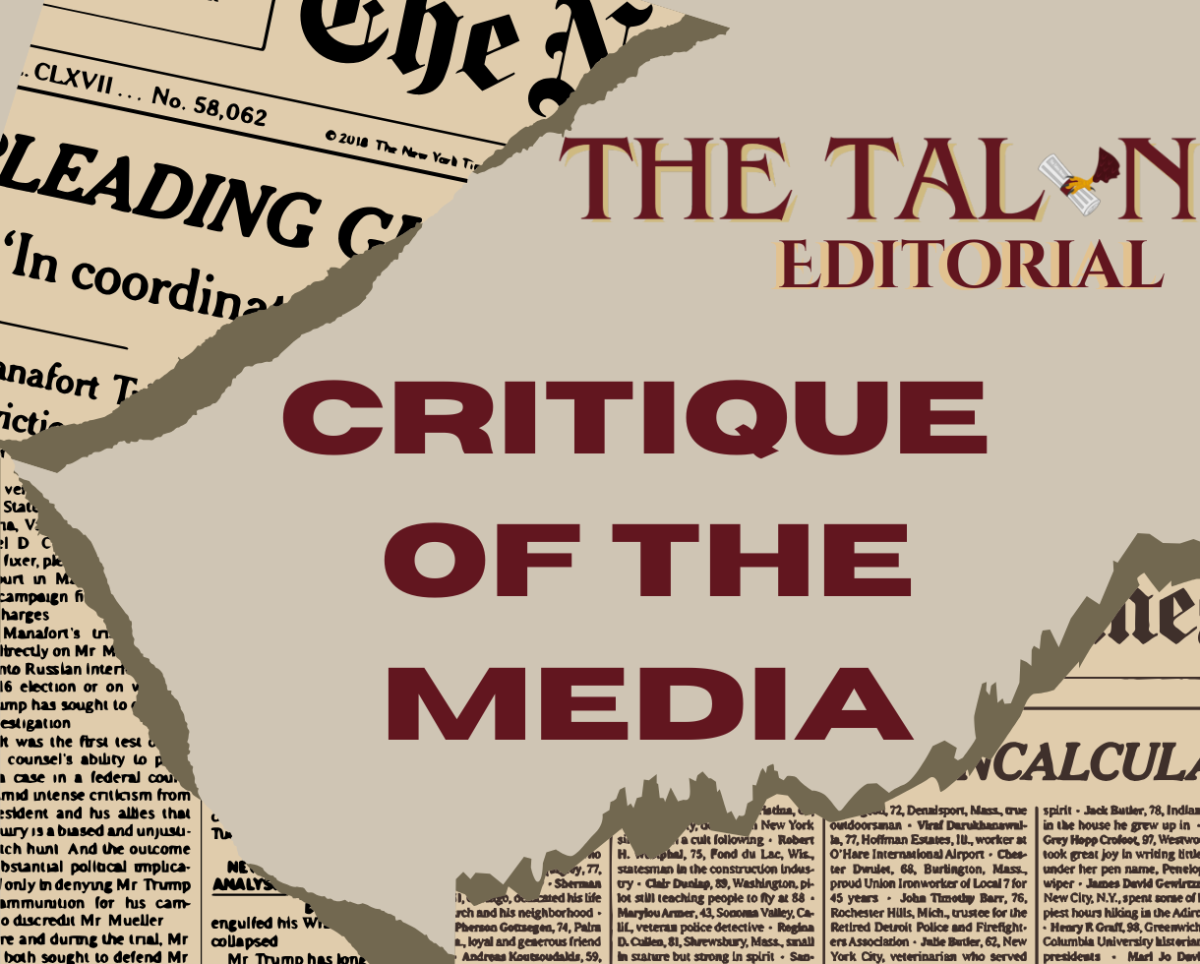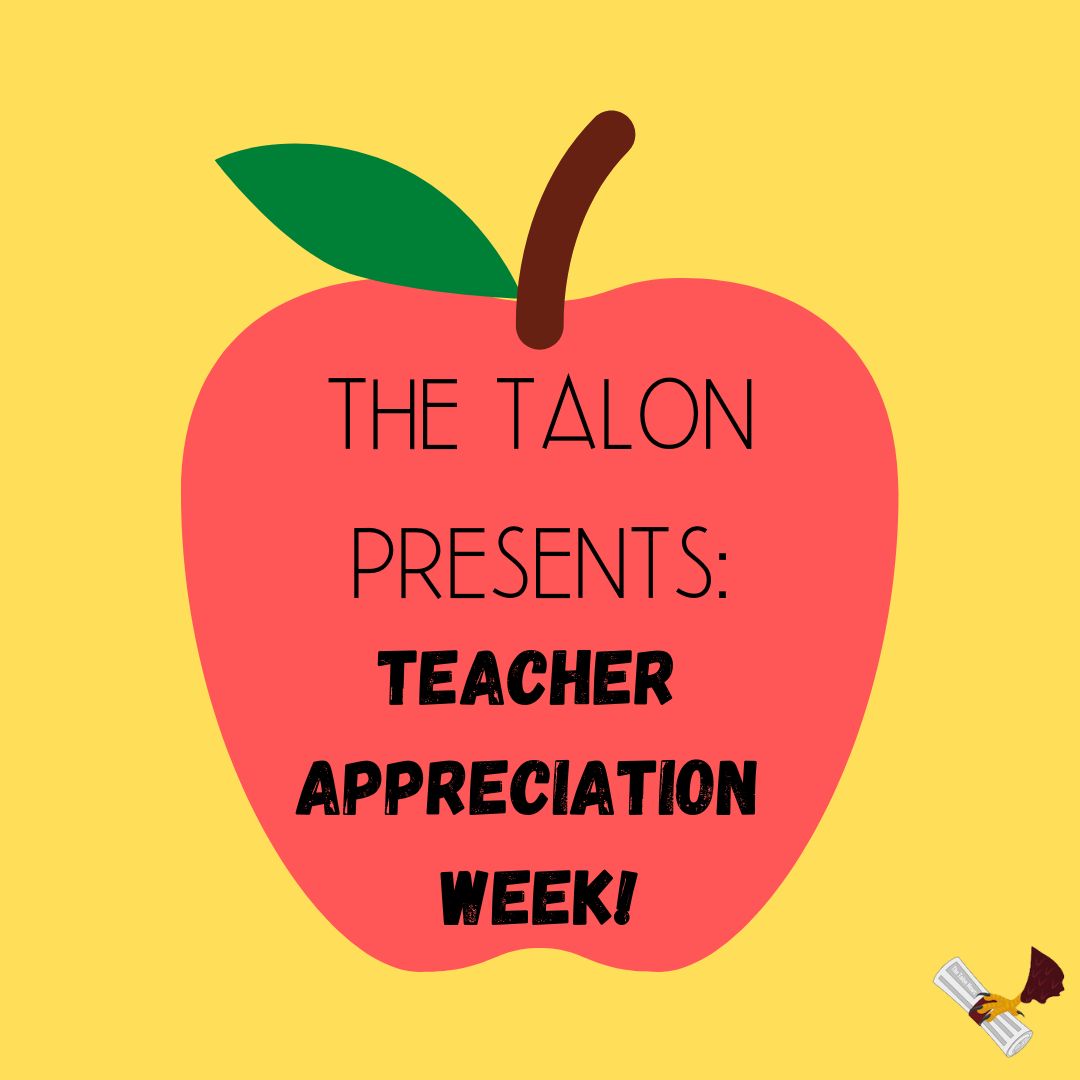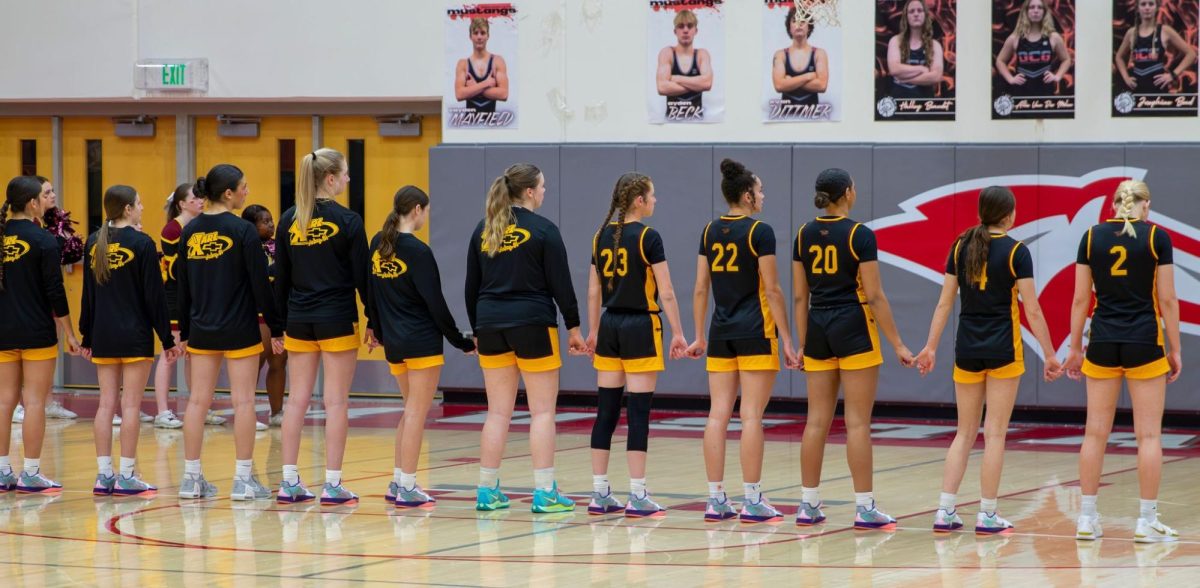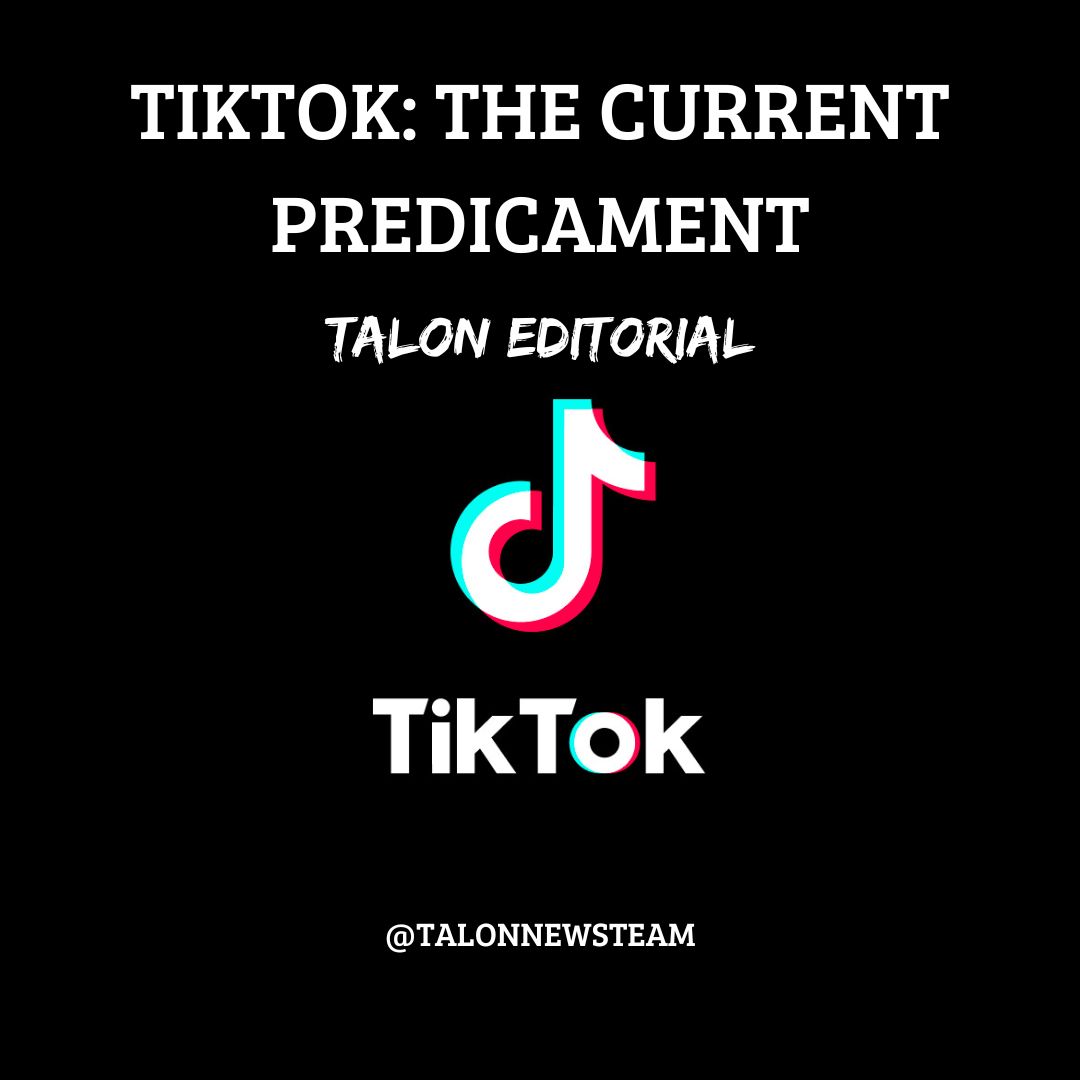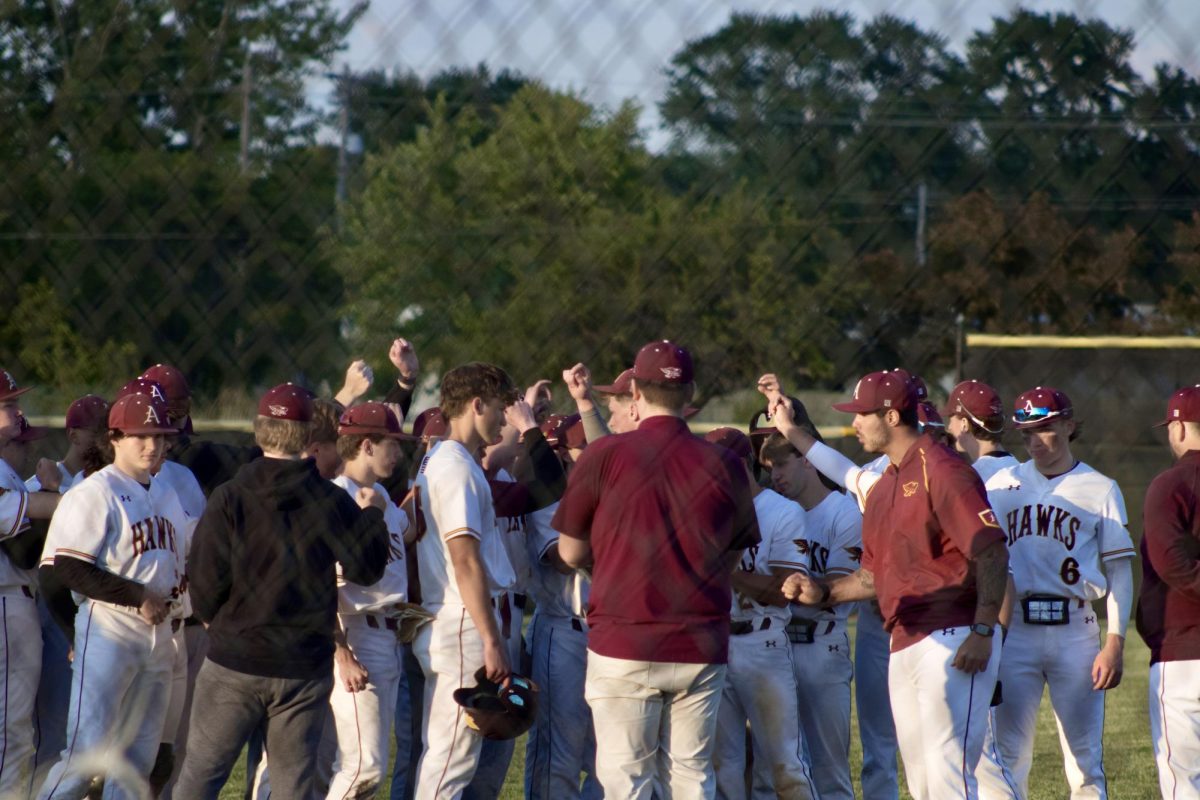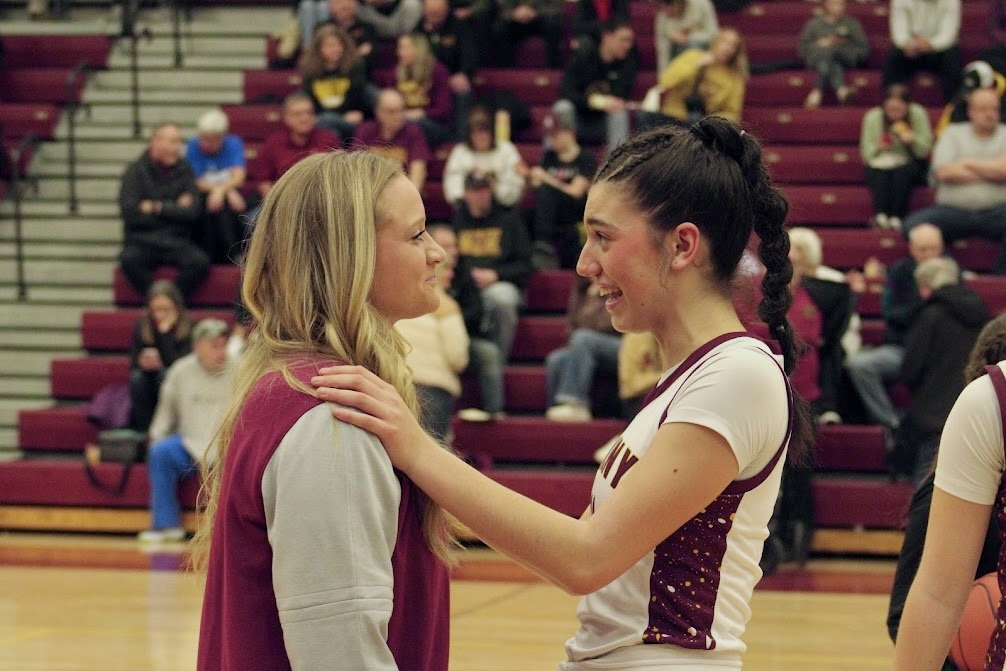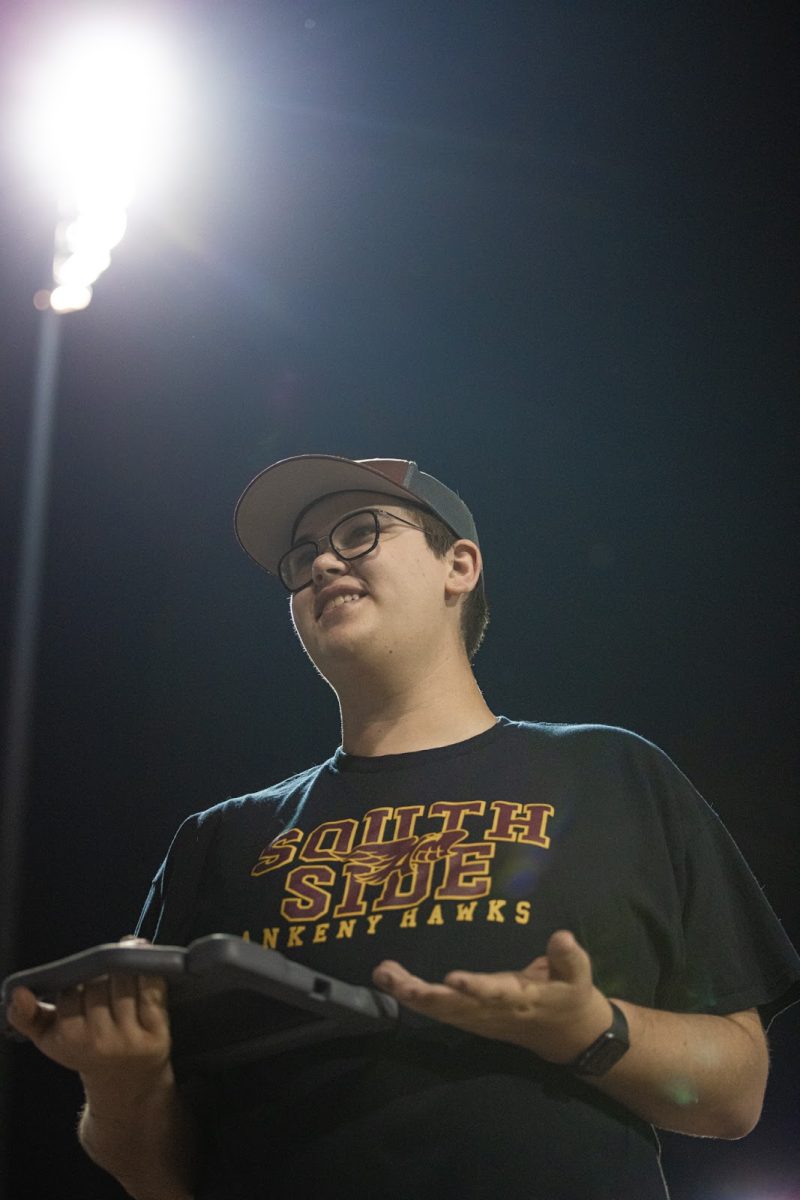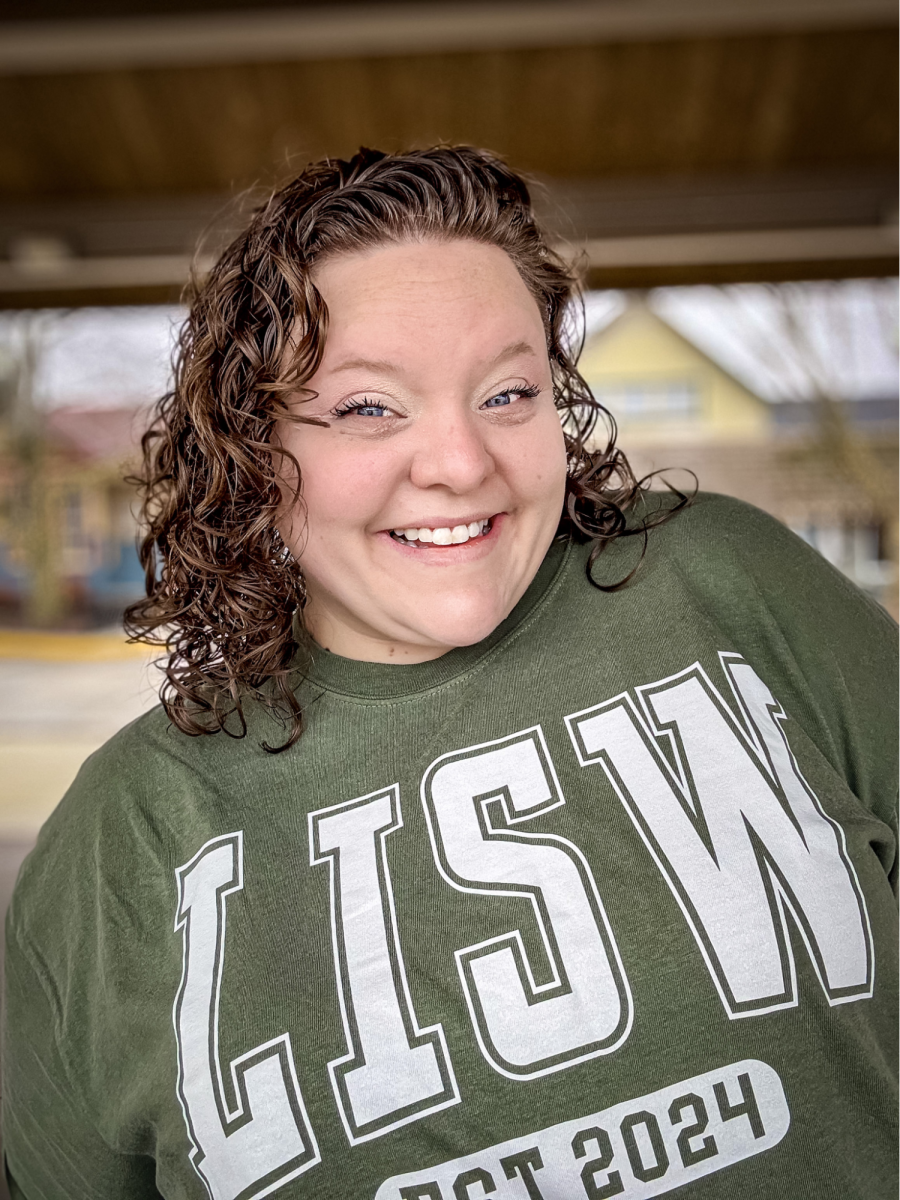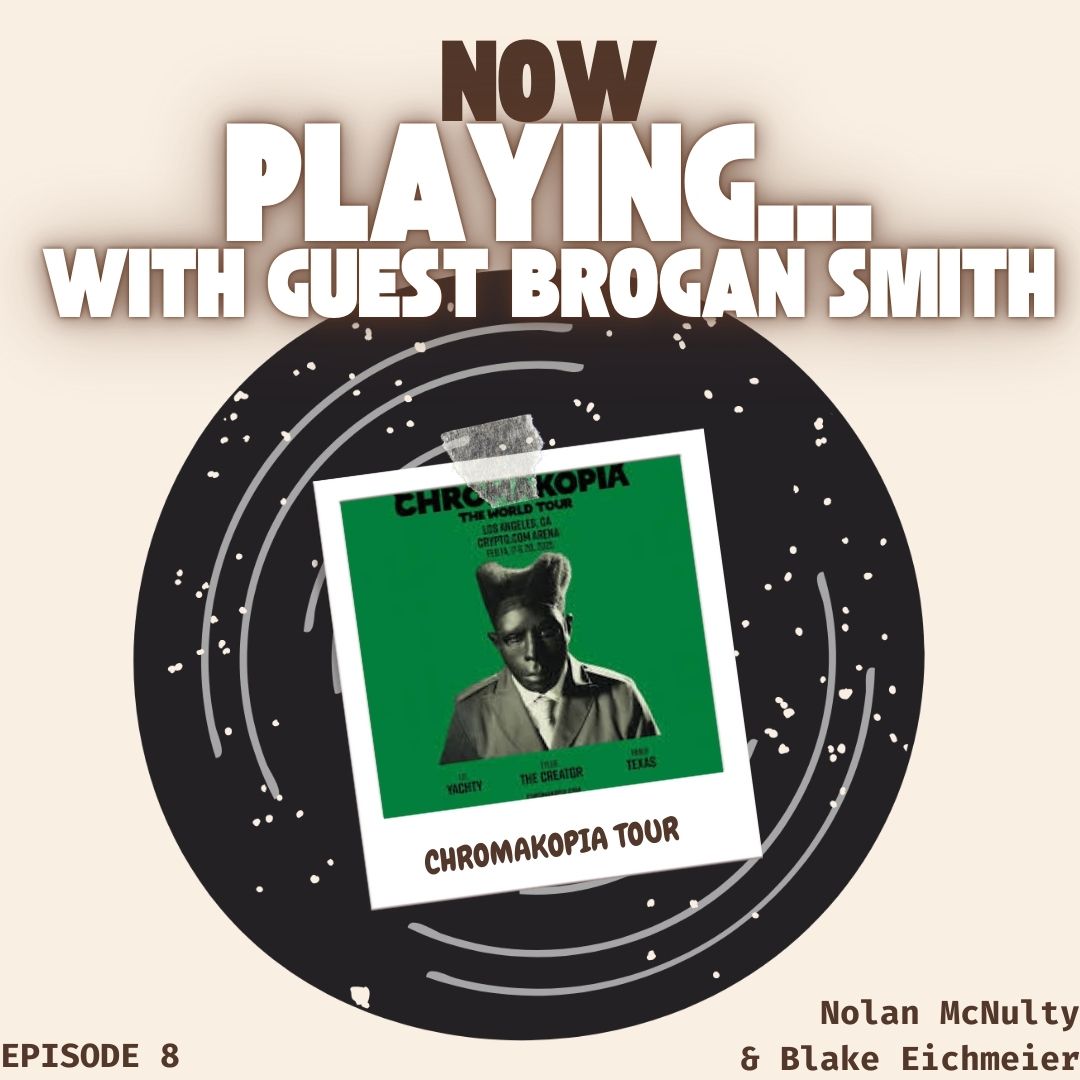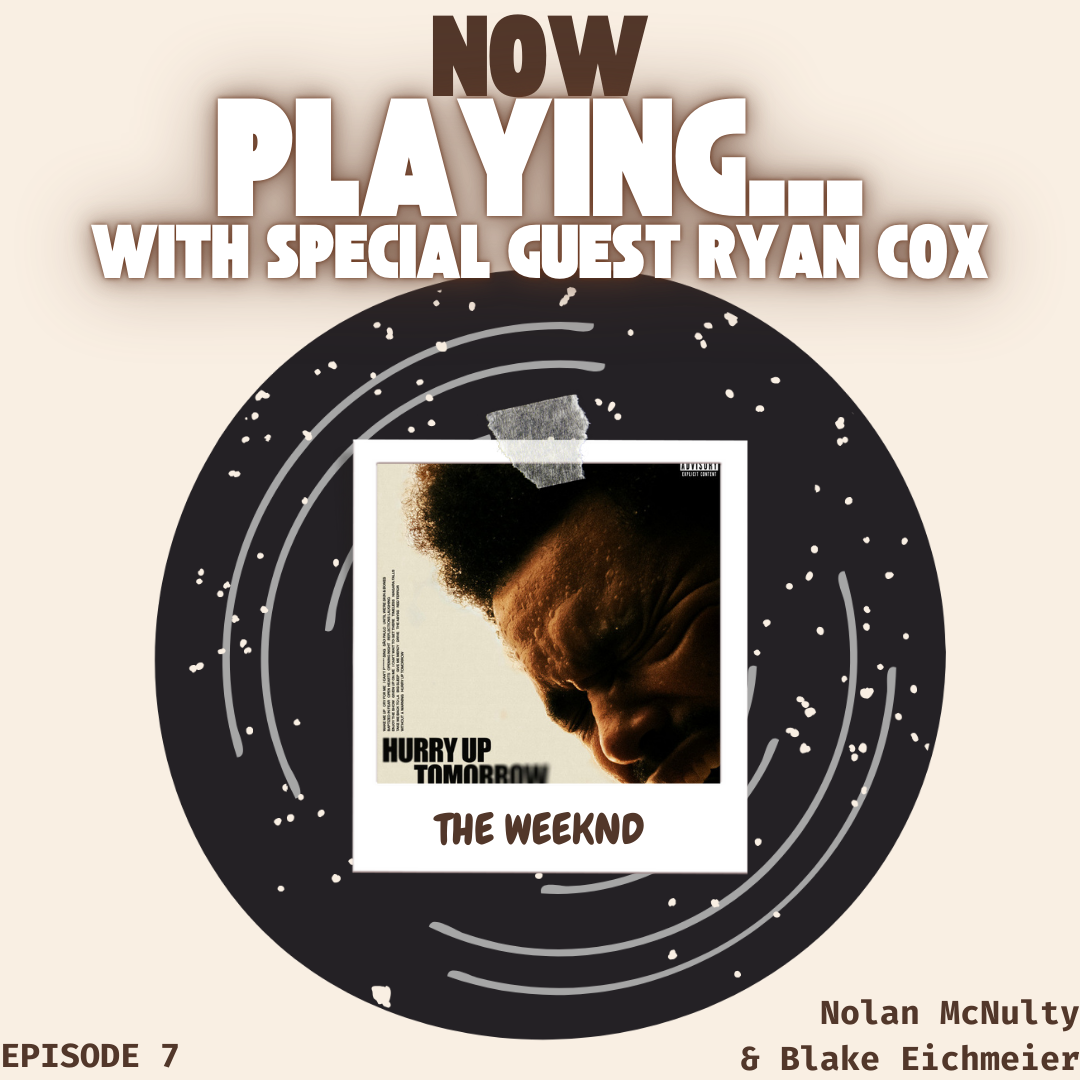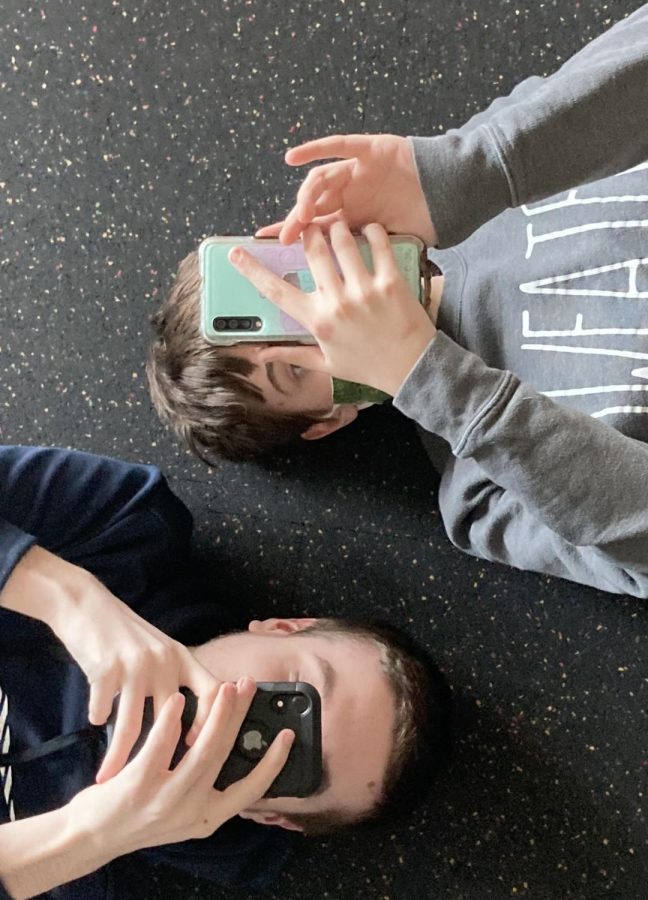The filtered reality
Social media’s undeniable influence on youth
Juniors Brendan Peteresen and Hannah Pross are captivated by the filtered reality on their cell phones. Sometimes the line between expressing your creativity through social media and letting it have too much of a hold on your life is unclear, and an issue both students and even adults can struggle with. Social media is something many have their own take on, and it is often reasoned that it has a light and dark side to its influences.
January 12, 2022
Social media is arguably one, if not the most prominent, form of communication and entertainment in the 21st Century. From posing for Instagram selfies to dancing in a Tik Tok video, social media is a notable factor in the lives of high school students. There are the good and the not-so-good parts, but whether you use it or not, most people are impacted.
To many who use it, social media is a good way to communicate with others. You can stay in contact with old friends or someone long distance. It is also a good way to meet new people as well, in a few different ways from replying to a comment to chatting in direct messages. Creating and strengthening relationships through the use of an online society is a benefit of many platforms.
“It allows you to connect with people you otherwise would have never known about,” senior Lindsey Johnson said. “You’re able to find people who share the same interests or mutuals as you do.”
One instance of this is following suggestions on a majority of the social media platforms, showing you accounts that are followed by some of the people who additionally follow you. It is a way to get a more focused view on people who you may not know, but could still enjoy getting to know.
It is also useful if you need to talk to one of your friends who is in a different period or to pass time when there is downtime in class, even if you want to talk to relatives who live farther away. Being able to view the life updates of friends and family, as well as post your own, is perhaps the most common reason people find themselves engaged in social media.
One of the main purposes of social media is to share thoughts or experiences with others. Things like video clips, memes, and opinions can all be things to help create unique conversations with others on the internet.
“Yeah I enjoy saying things on the internet,” sophomore Dylan Krahenbuhl said. “I like saying things because then people see them and they feel emotional… When something exciting happens, there’s often an urge to share it with those around you with who you feel comfortable.”
On Twitter, a majority of the content is people sharing their thoughts and opinions on a variety of topics. Sometimes these can be more light-hearted discussions about things such as favorite foods or movies, although some would argue even subjects such as a simple food preference can turn into something bigger, like the pineapple on pizza dilemma.
Other times it can be about topics more serious in nature, such as politics or current world issues, which creates a drastic difference in the comment section and the way people react. It can be said that, regardless of the topic, social media can be a place that harbors toxicity in numerous areas.
One of these is the way social media can create an army of green-eyed monsters.
“People’s self-perceptions [are impacted] because they see friends or people they know doing something, you know taking their best self-picture, you know they’re taking a picture of themselves doing something enjoyable,” counselor David Patterson said. “And they’re like ‘ugh, I just sat at home all day,’ and so you know you feel, ‘I didn’t do anything or ‘I didn’t – you know didn’t do something special, or why didn’t they invite me’ ?”
Social media companies, specifically Instagram have been under fire recently, as well as in the past, regarding the concept of creating a ‘false reality.’ People see their friends or even complete strangers doing the things they idolize inside their own minds, making them feel bad that it is not them in those photos. It creates insecurity in people’s lives where there should not be and has caused some users to go as far as to attempt legal action against social media companies and platforms.
It can be damaging to someone’s self-esteem and relationships when they feel like their life and what they have to share is less than that of their friends and other users. It can contribute to people chasing this perfection of which they, and likely the people they are envious of, cannot even achieve.
This can be one of many reasons not everyone wants to be an active participant in the social media world. Although in the society of high schoolers, they are conceivably a minority, there are a handful of students who do not see the point of social media fever.
“I don’t really have or use social media,” junior Josie Hayes said. “I just personally don’t find much of a use for it.”
Some students do not use social media often, or even at all, for several different reasons. Sometimes their parents do not allow them to, or they may just personally not like it or find it that interesting.
For others, things like cyberbullying may be an issue and a fear. When you put your thoughts and experiences online, it can be anxiety-inducing to some students, at the idea that other people are forming opinions about them based on what they may or may not post. Sometimes social media can give more options for people to do harmful things to themselves or others.
This leaves people asking and debating the risk it poses on mental health, seeing as how social media is one of the largest pastimes of the up and coming generations.
“Well, it’s one of those, where what I see from students,” Patterson said, “is the negative aspect. You know somebody said something mean or negative or hurtful through a social media platform, that’s what I hear.”
The way social media can affect students is something that counselors and teachers have become concerned with as it becomes more present in the educational setting. An obsession and addiction to a number of likes to a passive-aggressive comment from someone you thought was your friend is something many adults consider a partial cause to the moodiness commonly associated with adolescents.
Another mentionable thing that has come out of social media is the body positivity movement. In recent years people ranging from highly followed influencers to just average users have advocated on behalf of improving the state of individuals’ self-images, attempting to make social media a safer environment.
“Most of the insecurities I had growing up was because of the skinny women in magazines or on social media,” junior Natalie Jasso said. “I think that spicing up the body diversity not just on social media but on TV and magazines could allow young girls and boys to appreciate their bodies instead of developing a hatred for something they can’t change.”
The body positivity movement started mainly due to the lack of acceptance different body types receive on social media. Whether you were too little or too big, it seemed someone always had something negative to say, which is what the body positivity movement aims to remove from as many platforms as possible.
Even with the presence of online haters, most social media users can still enjoy the creative outlet it provides. Things like filming Youtube videos or Tik Toks, even making a ‘snapsterpiece,’ can let users release their innovative ideas into the form of a post. Taking the thoughts and emotions that you feel throughout the course of your experiences as a human and turning that into viewable content, is why many students likely view social media as a freeing escape from the stress of everyday life. That is when they are not having to deal with brutality from sometimes completely random people.
Social media has firmly rooted in the lives of people of all ages, but especially in teens, and as much as it can be seen as a creative and educational tool, it can also be seen as a disruption to the educational environment.
“Let’s take Tik Tok,” math teacher Deborah Cote-Glander said. “I mean it’s all about being creative, and creating videos, putting stuff in it, scripting it out. I also think though, there’s part of it that can be a distraction, especially in the classroom setting.”
Many teachers over the years have expressed their opinions on phones and social media, the general consensus being that they can keep students from staying focused on academics. Many teachers, as well as students and parents, have become increasingly concerned with this as disruptive social media challenges and trends continue to arise. This has primarily started on Tik Tok, like ‘Devious Licks’ and ‘National Shoot Up Your School Day,’ even causing some schools to shut down.
There is no right way to use social media, but there are plenty of wrong ones. Taking into consideration it is quite prevalent popularity, it feels likely that it is not going anywhere anytime soon, leaving the question of whether it even should.
“Just treat others the way you want to be treated,” Patterson said. “No one wants to be treated poorly.”




